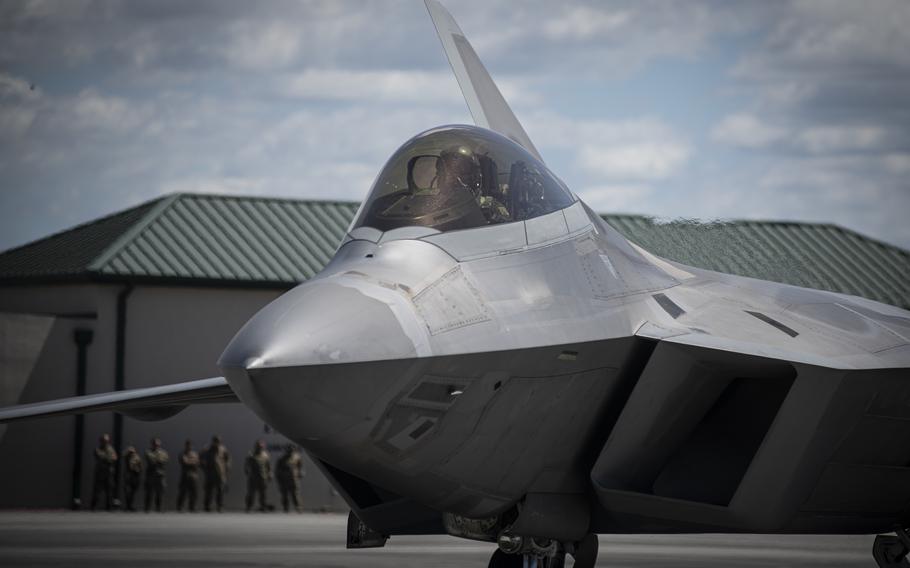
A U.S. Air Force pilot assigned to the 149th Fighter Squadron, Virginia Air National Guard, prepares for takeoff in an F-22 Raptor at the Air Dominance Center in Savannah, Ga., May 11, 2022. (Morgan R. Whitehouse/U.S. Air National Guard)
A stagnant Air Force budget proposal for fiscal 2025 led the service to make tough decisions on funding procurement while meeting increased costs for personnel pay and the rising price of flight hours and munitions.
The service’s budget request for fiscal 2025, which begins Oct. 1, is $217.5 billion — up about 1.1% from the previous year’s request and does not keep up with inflation, Kristyn Jones, interim undersecretary of the Air Force, said Friday.
“It costs roughly a billion dollars more to maintain parity for readiness, compared to [2024] in our weapon systems sustainment and flying hours,” she said. “Even though we’re just keeping it even, it costs about a billion dollars more. Same thing with our military pay, given the 4.5% increase for military pay and the other benefits, it’s costing about a billion dollars more for our military personnel.”
That meant tough decisions on procurement, such as spending the same amount of money on munitions as last year but buying less.
“You’ll see the dollars are the same, but in some cases, we’re getting fewer quantities,” Jones said Friday during a preview of the budget release Monday.
The budget expects the number of airmen to hold steady from 2024 at 320,000 troops.
“Overall, I consider this to be an acceptable budget, I can defend it,” Air Force Secretary Frank Kendall said Friday. “It moves forward on the things that we prioritize. Again, I’d like to be able to move faster, but we do have constraints.
Of the total department budget, $188.1 billion will go to the Air Force and $29.4 billion to the Space Force. That’s about a $3 billion increase for the Air Force and a $5.6 billion decrease for the Space Force.
Service officials said the Air Force will remain strategy-driven to provide the joint force with the capabilities it needs while accepting some risk to modernization to achieve essential near-term readiness.
The service will again ask to retire the F-22 fighter jet, despite Congress’s previous opposition to approve the move. It first asked to do so in 2022.
Divesting from it entirely would save about $2 billion, said Maj. Gen. Mike Greiner, the deputy assistant secretary for budget. Past divestments from the F-22 have gone straight into its replacement, known currently as the Next-Generation Air Dominance fighter, or NGAD. The proposed 2025 budget adds $815 million for NGAD development and testing of air vehicle and mission systems for a total of $3.4 billion to augment current and future aircraft.
Other funding highlights include $1.3 billion to support increased pay and benefits for personnel, $1.6 billion for recruiting and retention, $1.5 billion for quality-of-life improvements for mission facilities, family housing, dormitories and child care centers, and $451 million in resilience and well-being programs.